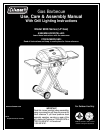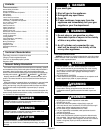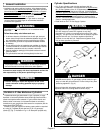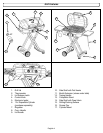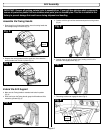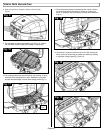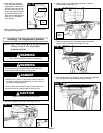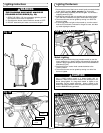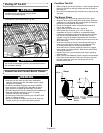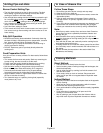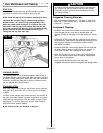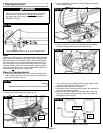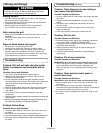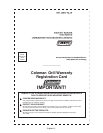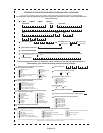Special offers from our partners!

Find Replacement BBQ Parts for 20,308 Models. Repair your BBQ today.

1.
Make a soapy solution of equal parts mild liquid dishwashing
detergent and water.
2.
Turn off all burner control knobs.
3.
Apply a soap solution to the connections indicated with the
arrows (Fig. 20). If bubbles appear at these areas, a leak is
indicated.
Fig. 20
No Smoking
No Flame
If you detect a leak:
1.
Stop a leak by tightening the loose joint, or by replacing the
faulty part with a replacement part recommended by Coleman.
DO NOT attempt to repair the cylinder if it should become
damaged; the cylinder MUST be replaced.
2.
If you are unable to stop a leak, remove the cylinder from the
grill. DO NOT use the grill until the leak is corrected.
When to test for leaks:
1.
Perform a leak test each time the gas supply cylinder is
connected to the regulator. Leak test anytime a part of the gas
system is replaced.
Fixing A Fuel Leak
How to Check for Leaks
1. Regularly check the burner venturi tubes for blockage from an
insect nest. Read “Cleaning the Venturi” in the section titled “Care,
Maintenance, and Cleaning”, and also the section titled
“Troubleshooting”.
2. Check that all the burner venturi [A] are set over the valve
outlets [B] correctly. The valve orifice [C] must be inside the
venturi (Fig. 21).
3. Use only the gas specified.
4. Keep the grill on a level surface.
5. Keep the grease pan empty at start up.
WARNING
Failure to follow these safety steps before using the grill each
time could result in a fire that could be hazardous to you, your
appliance or property. It is especially important to observe
these steps after the grill has been stored, moved or cleaned.
Start-Up Check List
B
C
A
REPRESENTATIVE ILLUSTRATION
CAUTION
DO NOT add charcoal or lighting fluid!
Fig. 21
DANGER
TO PREVENT FIRE OR EXPLOSION HAZARD:
• NO SMOKING. DO NOT use or permit
sources of ignition in the area while doing
a leak test.
• Perform leak tests outdoors only.
• NEVER perform a leak test with fire
or flame.
Leak Testing - Disposable LP Gas Cylinders
English-8



